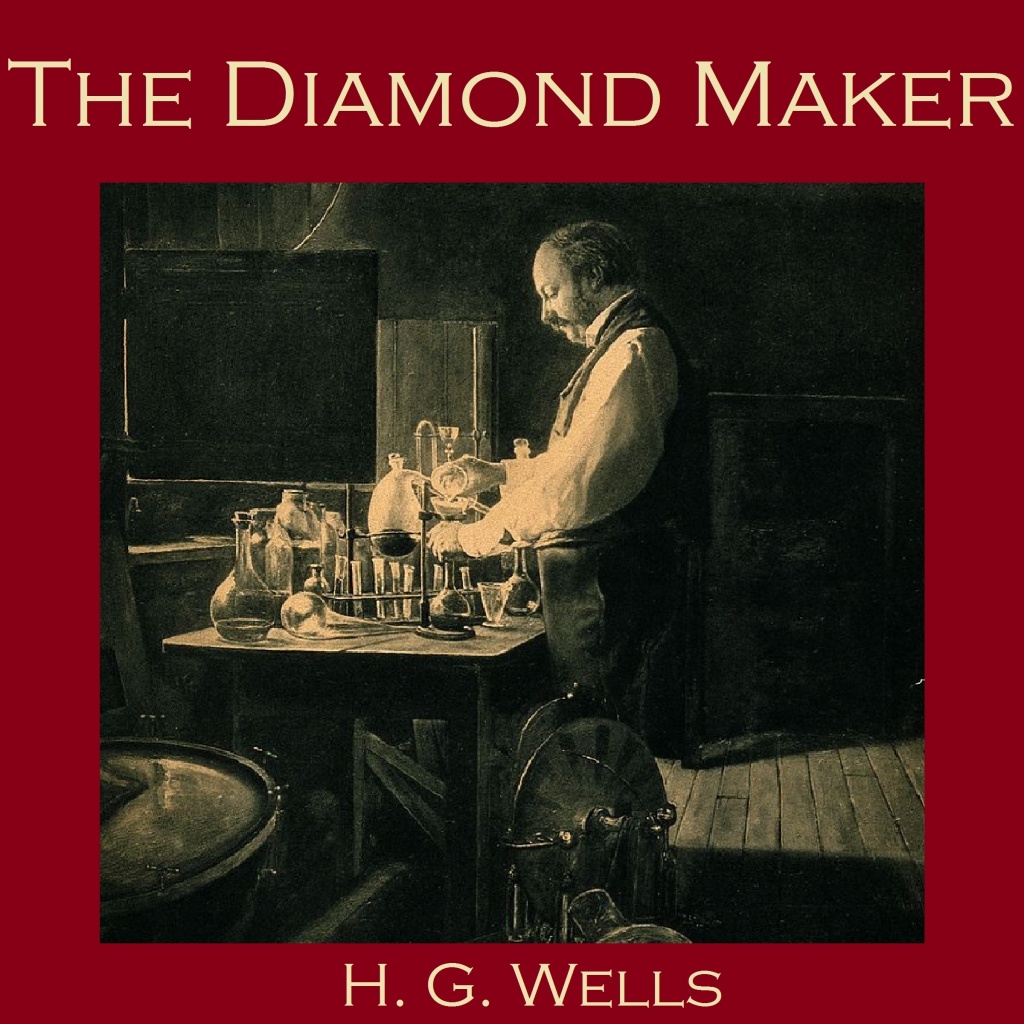“The Diamond Maker” is a short story by the English author H. G. Wells (1866–1946) first published in the Pall Mall BudgetWeekly magazine published in London from 1868 until 1920. in 1894, reprinted in The Stolen Bacillus and Other IncidentsCollection of 15 short stories by H. G. Wells, first published in 1895. (1895) and The Door in the Wall and Other StoriesCollection of eight short stories by H. G. Wells, first published in 1911. (1911).[1] The story is told by a businessman who, after a long and tiring day, decides to stroll down to the Embankment in London and relax by watching the River Thames flowing by.
The narrator is approached by a ragged and dishevelled man who “looked as though he had been kept in a dustbin for a week”. After a few moments of conversation the man tells the narrator that he is able to make diamonds, and produces a brown pebble almost as big as the top of his thumb, which he asks the narrator to examine; it cannot be scratched with a penknife and easily makes a score mark on the narrator’s watch glass, persuading him that it could really be a diamond. The man offers to sell the pebble for £100, which makes the narrator a little hesitant, as a real diamond that size would be worth many thousands of pounds. When the narrator asks the man how he came by such a diamond he repeats his claim that he made it.
The man tells the narrator that for fifteen years he has worked alone and in secret so that others could not copy his work, allowing him to sell his diamonds without it being known that they could be produced in large quantities. After his money ran out he continued his experiments in cheap lodgings in Kentish Town, and took various menial jobs to support himself. He finally succeeded when, using an idea suggested by the experiments of Gabriel Auguste Daubrée, he put the mixture which might produce diamonds together with dynamite in a cylinder too strong to burst when the dynamite exploded. For two years he kept the cylinder hot in the fire in his room, to give the diamonds time to grow. However, as he inspected the results his neighbour, suspecting that he was a bomb-making anarchist, told him he had called the police. The man was thus forced to abandon the lodgings house, leaving him in the state in which the narrator has found him; homeless and carrying diamonds worth hundreds of thousands of pounds which he cannot sell without causing suspicion.
The narrator is more than half convinced by the man’s story, but not having £100 on his person to buy the pebble invites the man to visit his office the following day, but he refuses, suspecting a trap, although he does accept the narrator’s business card. The businessman never sees the diamond maker again, although on one occasion he does call while the office is unattended. The story ends with the narrator reflecting on the encounter, wondering if the man is dead, or will perhaps re-emerge and become famous, and if he himself missed a business opportunity.
Commentary
It has been known since the experiments of the French scientist Antoine Lavoisier in 1772 that diamond is a crystalline form of carbon. James Ballantyne Hannay in 1878, and Ferdinand Frédéric Henri Moissan in 1893, both claimed to have made artificial diamonds. Moissan’s method was to heat charcoal (a form of carbon) and iron in a furnace, but the diamonds produced were exceedingly small. It was not until the 1950s that the production of artificial diamonds became commercially viable.[2]
The “half-deranged” diamond maker represents a familiar theme in Wells’s stories, his conviction that “science has unlimited possibilities for both good and evil and that knowledge without moral responsibility corrupts and ultimately destroys its possessor.”[3]
See also
- H. G. Wells bibliographyList of publications written by H. G. Wells during the more than fifty years of his literary career.
External links
- Full text of “The Diamond Maker” at Project Gutenberg

